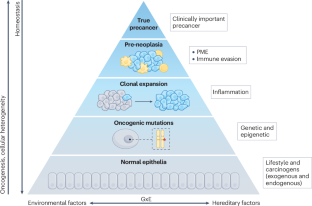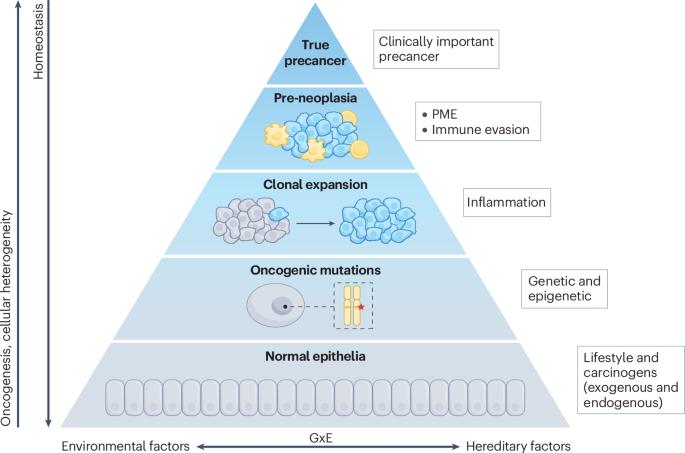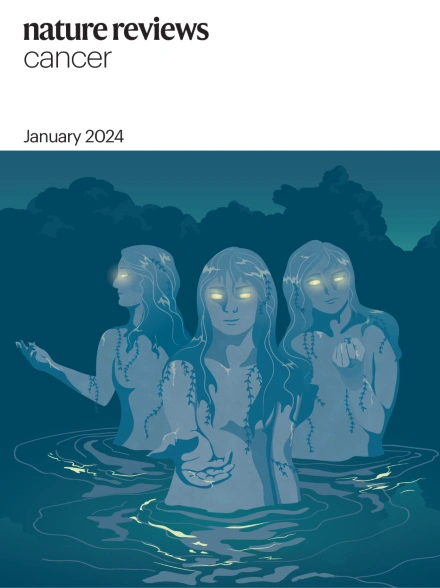Defining precancer: a grand challenge for the cancer community
IF 72.5
1区 医学
Q1 ONCOLOGY
引用次数: 0
Abstract
The term ‘precancer’ typically refers to an early stage of neoplastic development that is distinguishable from normal tissue owing to molecular and phenotypic alterations, resulting in abnormal cells that are at least partially self-sustaining and function outside of normal cellular cues that constrain cell proliferation and survival. Although such cells are often histologically distinct from both the corresponding normal and invasive cancer cells of the same tissue origin, defining precancer remains a challenge for both the research and clinical communities. Once sufficient molecular and phenotypic changes have occurred in the precancer, the tissue is identified as a ‘cancer’ by a histopathologist. While even diagnosing cancer can at times be challenging, the determination of invasive cancer is generally less ambiguous and suggests a high likelihood of and potential for metastatic disease. The ‘hallmarks of cancer’ set out the fundamental organizing principles of malignant transformation but exactly how many of these hallmarks and in what configuration they define precancer has not been clearly and consistently determined. In this Expert Recommendation, we provide a starting point for a conceptual framework for defining precancer, which is based on molecular, pathological, clinical and epidemiological criteria, with the goal of advancing our understanding of the initial changes that occur and opportunities to intervene at the earliest possible time point. In this Expert Recommendation, Faupel-Badger and colleagues present a conceptual framework to define precancer and advance our understanding of the earliest changes that occur in the progression to overt cancer, providing novel opportunities to intervene to prevent or treat their emergence.


定义癌前病变:癌症界面临的巨大挑战
癌前病变 "一词通常是指肿瘤发展的早期阶段,由于分子和表型的改变,导致异常细胞至少部分具有自我维持能力,并在限制细胞增殖和存活的正常细胞线索之外发挥作用,从而与正常组织区分开来。虽然这类细胞在组织学上往往有别于相同组织来源的相应正常细胞和浸润性癌细胞,但如何界定癌前病变仍然是研究和临床界面临的一项挑战。一旦癌前病变发生了足够的分子和表型变化,组织病理学家就会将该组织鉴定为 "癌症"。虽然诊断癌症有时也很困难,但浸润性癌症的确定通常不那么模糊,而且表明转移性疾病的可能性很高。癌症的标志 "规定了恶性转化的基本组织原则,但究竟有多少标志以及它们以何种形式定义癌前病变,尚未得到明确一致的确定。在本专家建议中,我们以分子、病理、临床和流行病学标准为基础,为定义癌前病变的概念框架提供了一个起点,目的是促进我们对发生的初始变化和尽早干预的机会的了解。
本文章由计算机程序翻译,如有差异,请以英文原文为准。
求助全文
约1分钟内获得全文
求助全文
来源期刊

Nature Reviews Cancer
医学-肿瘤学
CiteScore
111.90
自引率
0.40%
发文量
97
审稿时长
6-12 weeks
期刊介绍:
Nature Reviews Cancer, a part of the Nature Reviews portfolio of journals, aims to be the premier source of reviews and commentaries for the scientific communities it serves. The correct abbreviation for abstracting and indexing purposes is Nat. Rev. Cancer. The international standard serial numbers (ISSN) for Nature Reviews Cancer are 1474-175X (print) and 1474-1768 (online). Unlike other journals, Nature Reviews Cancer does not have an external editorial board. Instead, all editorial decisions are made by a team of full-time professional editors who are PhD-level scientists. The journal publishes Research Highlights, Comments, Reviews, and Perspectives relevant to cancer researchers, ensuring that the articles reach the widest possible audience due to their broad scope.
 求助内容:
求助内容: 应助结果提醒方式:
应助结果提醒方式:


